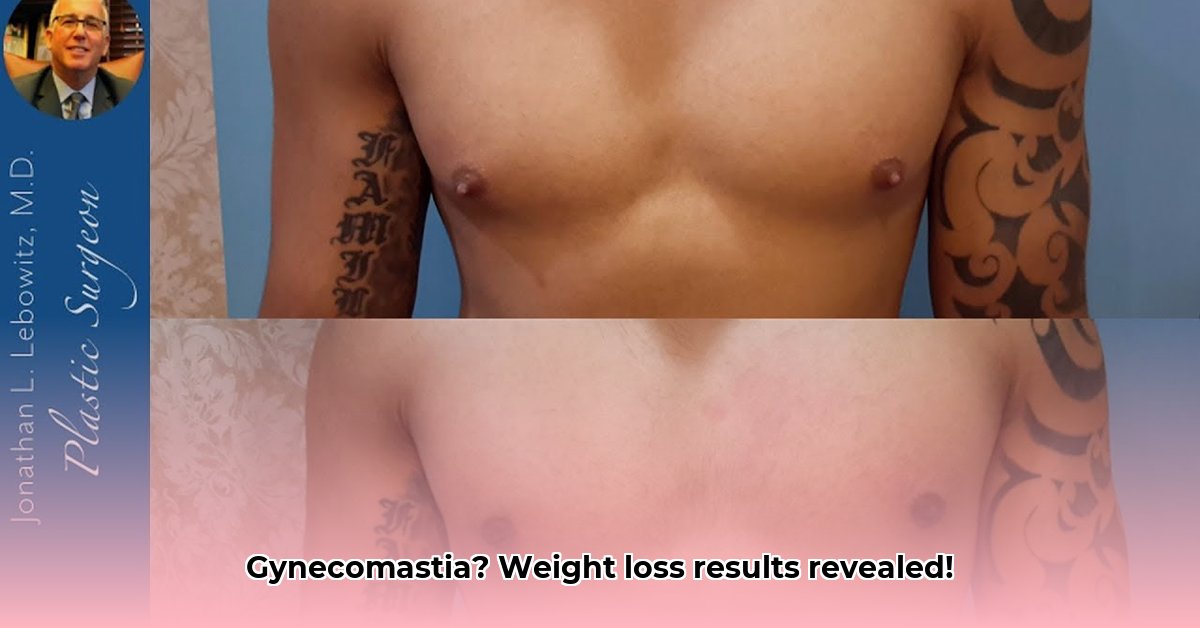
Understanding Gynecomastia and Weight Loss
Losing weight is a significant accomplishment, benefiting your overall health. However, some men experience an unexpected side effect: the appearance of enlarged breast tissue, a condition known as gynecomastia (enlarged breast tissue in men). This can be disheartening, but understanding the causes and treatment options can empower you to make informed decisions. This comprehensive guide helps you navigate the complexities of gynecomastia before and after weight loss, exploring various treatment options and helping you choose the best approach for your individual needs.
Causes of Gynecomastia: Beyond Excess Fat
Gynecomastia's root cause dictates the most effective treatment. Sometimes, excess fat is the primary factor, termed "fatty gynecomastia." Weight loss often significantly improves this type. However, hormonal imbalances can also cause glandular tissue growth ("glandular gynecomastia"), which weight loss alone may not resolve. Accurate diagnosis is crucial for effective treatment planning. A consultation with a medical professional will help to determine the nature of your gynecomastia.
Weight Loss and Its Impact: Addressing Expectations
Significant weight loss frequently reduces the visibility of fatty gynecomastia, as the excess fat diminishes. Yet, even with substantial weight reduction, excess skin often remains. This is because the skin's elasticity doesn't always fully recover after considerable weight fluctuations. This residual skin laxity frequently requires additional treatment to achieve optimal aesthetic results.
Treatment Options: Tailoring Solutions to Individual Needs
Several effective treatments target gynecomastia, particularly when excess skin persists after weight loss. The ideal option depends on your individual circumstances.
Liposuction: Removing Excess Fat
Liposuction, a minimally invasive procedure, uses suction to remove excess fat. It's ideal for individuals with primarily fatty gynecomastia and minimal excess skin. Recovery is relatively quick with minimal scarring.
Surgical Excision (Mastectomy): Addressing Glandular Tissue
Surgical excision – also known as a mastectomy in this context – is a more involved procedure that removes both fatty and glandular breast tissue. This approach is effective for gynecomastia with significant glandular tissue or when liposuction proves insufficient. It requires a longer recovery period and may result in more noticeable scarring.
Torsoplasty: Reshaping and Tightening
Torsoplasty focuses on removing excess skin and reshaping the chest area. It's frequently performed after weight loss or alongside other procedures to address skin laxity and improve overall chest contour. This procedure is more invasive and has a correspondingly longer recovery time. It is often necessary for those with significant amounts of excess skin.
Combined Approaches: Maximizing Outcomes
Often, the most effective strategy involves a combination of these procedures. For example, liposuction might remove excess fat, followed by torsoplasty to address loose skin. This tailored approach optimizes results and addresses both fat and skin laxity.
Before-and-After Examples: Visualizing Potential Outcomes
(This section would include carefully selected before-and-after photos of patients who have undergone these procedures. All images would be obtained with the express written consent of the patients and would adhere to strict ethical guidelines.)
Recovery and Aftercare: A Detailed Look
Recovery time varies depending on the procedure type and individual healing responses. Expect bruising, swelling, and discomfort. Your surgeon will provide comprehensive aftercare instructions, including medication, activity limitations, and the use of compression garments if necessary. Strict adherence to these instructions is essential for optimal healing and outcomes. Budgetary considerations are important as well. Surgical procedures can be quite expensive and may or may not be covered by insurance.
Choosing the Right Surgeon: Expertise Matters
Selecting a board-certified plastic surgeon with extensive experience in gynecomastia surgery is paramount. Thoroughly research potential surgeons, review their credentials and experience, and examine patient testimonials. Consultations with several surgeons are recommended to ensure the best fit for your individual needs.
Conclusion: Informed Decisions for Optimal Results
Addressing gynecomastia post-weight loss requires a personalized approach. The ideal plan depends on the underlying cause, the amount of excess skin, and your individual preferences. A clear understanding of the various treatment options, coupled with experienced medical guidance, ensures informed decision-making and facilitates achieving optimal aesthetic outcomes. Remember, realistic expectations and thorough communication with your surgeon are key to a positive experience and successful results.